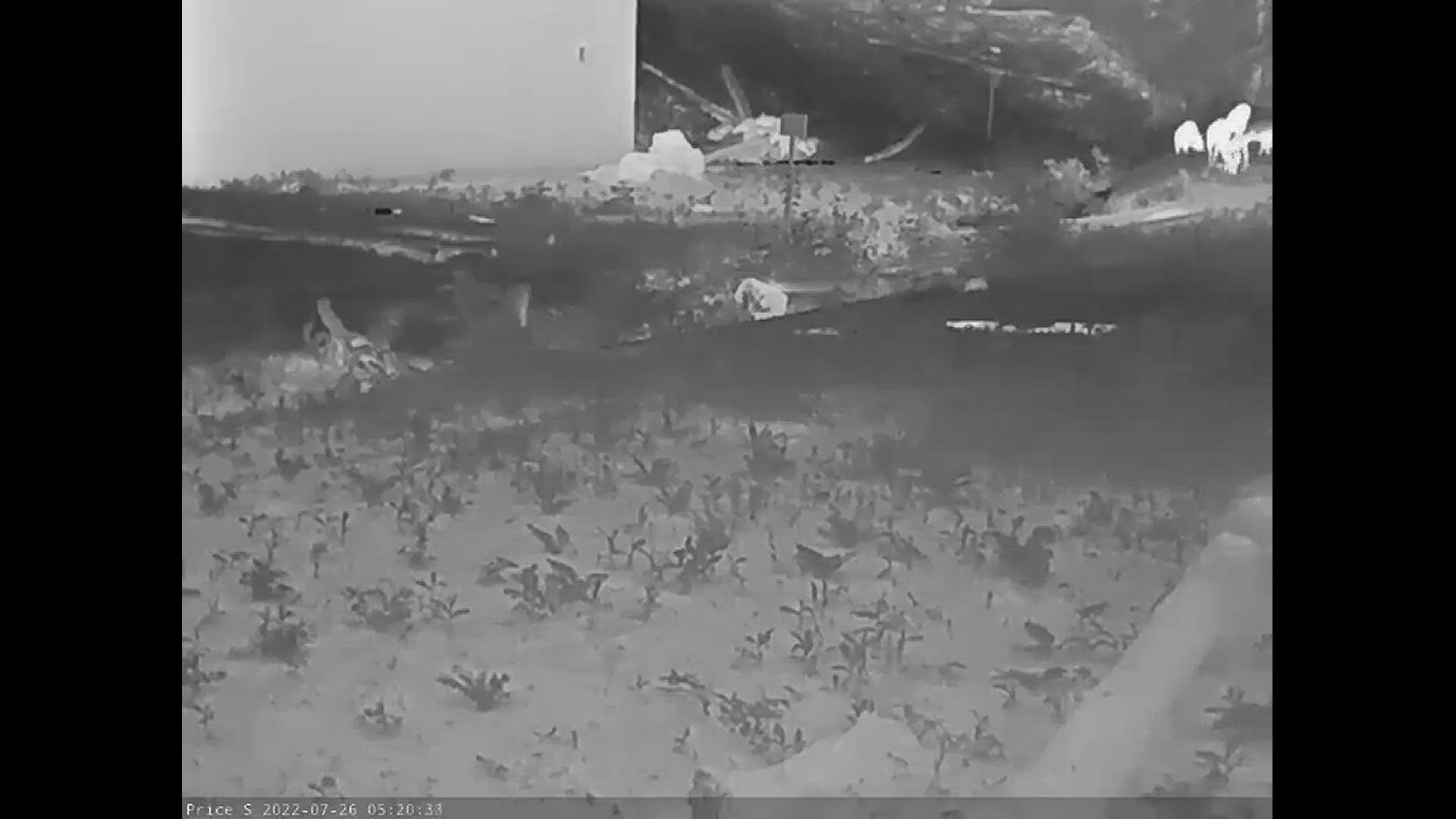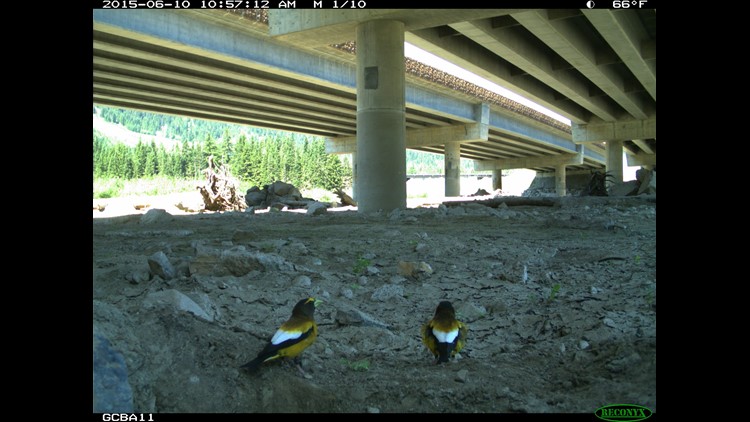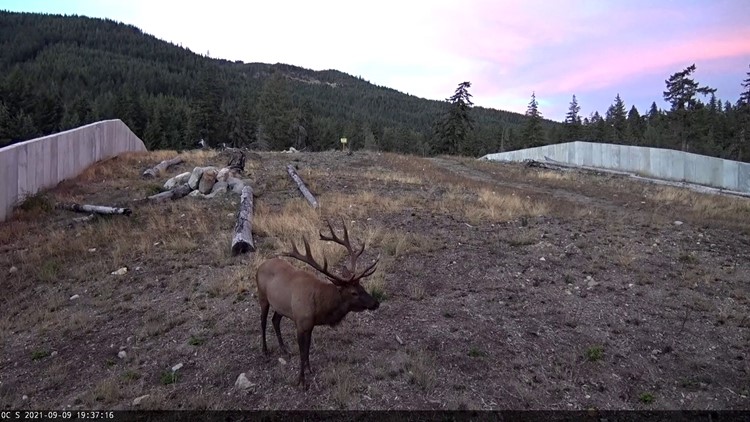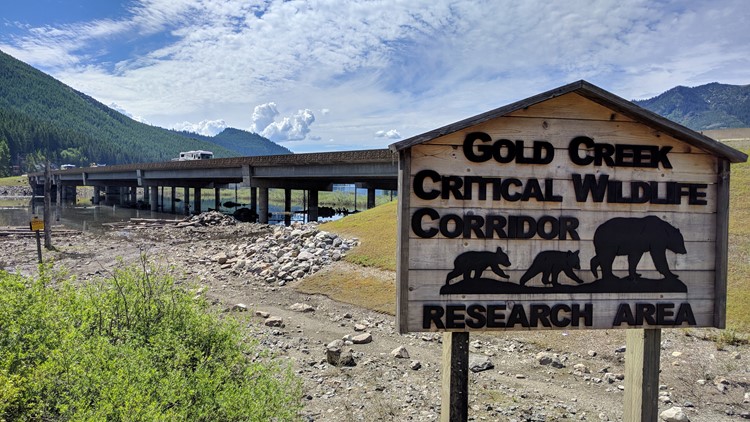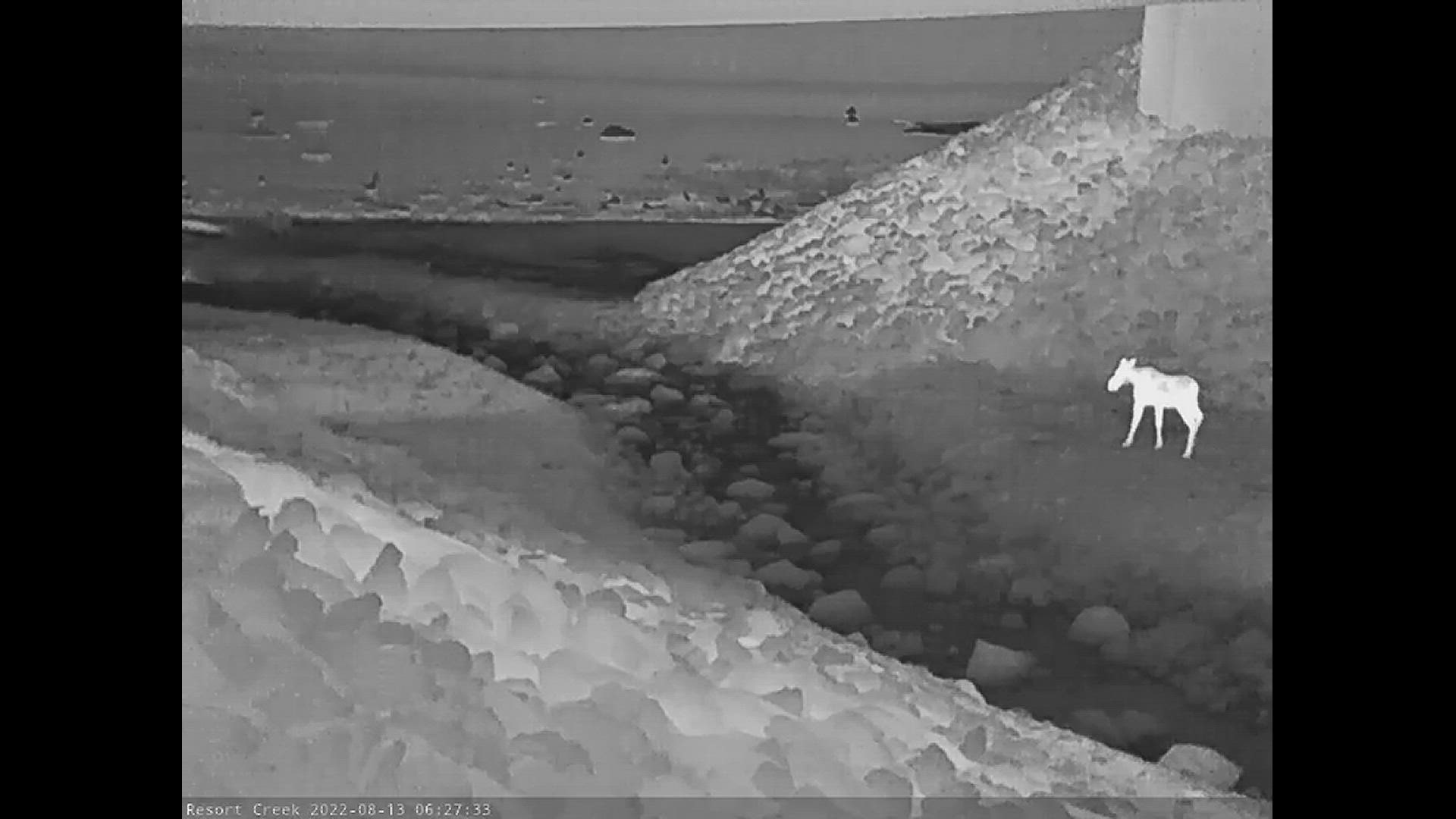EASTON, Wash. — The Washington State Department of Transportation (WSDOT) began Phase 3 construction this year on a 15-mile stretch of Interstate 90 between Hyak and Easton that will include new wildlife crossings.
The crossings will help reconnect animals with habitats they have been isolated from because of high traffic volumes on the interstate – joining existing crossing structures that have already had an impact on wildlife.
According to Patty Garvey-Darda, a wildlife biologist with the U.S. Forest Service, the ecosystem in the Cascade mountains on either side of I-90 changes quickly, and is consequently teeming with biodiversity. The project zone is in the rain shadow of the Cascade crest. The top of the pass annually sees around 140 inches of precipitation, but just 15 miles east, that number drops down to 60. Across that distance, “The assemblage of species at each step along the way changes,” Garvey-Darda said. “Whether it’s vegetation or small mammal communities.”
In many places, I-90 prevents wildlife from moving between the north and south Cascades. Glen Kalisz, a wildlife biologist with WSDOT, said studies have found that any highway carrying more than 10,000 vehicles per day is a complete barrier to animal movement. I-90 averages 30,000 vehicles a day, with double that amount on peak travel days.
"It's essentially a giant wall that nothing can cross," Kalisz said. "A lot of times when you surpass that 10,000-vehicle-per-day threshold, animals stop attempting to cross the highway altogether. They can tell this is a losing battle."
Wildlife needs to move from place to place for a variety of reasons, including finding food, finding mates and rearing their young. When animals are cut off by a major highway, they can lose access to other breeding populations, running the risk of inbreeding. When animals lose genetic variability, that could impact their ability to withstand things like diseases and other environmental changes.
“They just lose resiliency,” Garvey-Darda said.
Isolation is more so an issue with animals stuck on the south side of I-90, between the south Cascades and the Columbia River Gorge. Research by Western Washington University and the Washington State Department of Fish and Wildlife shows that mountain goats living in the south Cascades have become isolated. A master's thesis by a Central Washington University student discovered the same thing about western toads.
Wildlife crossings reconnecting wildlife to the north and south Cascades
Encouragingly, existing wildlife crossing structures along I-90 have biologists optimistic about what kind of impact the future structures could have, and not just on larger charismatic species like bears, deer or elk.
Using a variety of monitoring programs, WSDOT is documenting around 4,000 successful wildlife crossings a year, nearing 20,000 total successful crossings since Phase 2 projects were completed several years ago. While most crossings are larger mammals, monitoring by Central Washington University has shown species like coastal giant salamanders using structures to cross safely beneath the highway.
“Two years in a row they’ve documented western toads breeding at the south end of the overpass and even have documented little toadlets, tiny little things the size of a dime crossing the overpass,” Kalisz said. “So, everything from toadlets up to elk has been documented very consistently.”
This August, a moose was spotted using an undercrossing at Resort Creek, which is just southwest of Snoqualmie Pass. Another moose sighting was reported in the same area in September, and finally, a sighting was reported at Mount Rainier National Park, which is the farthest southwest a moose has ever been spotted in Washington state.
"That moose was huge, really huge from the standpoint of what we wanted to achieve," Garvey-Darda said.
The breadth of species taking advantage of the crossings, and the consistency with which they’re used, represents a major success in what biologists call “habitat connectivity,” a term that describes how landscape “facilitates or impedes animal movement and other ecological processes,” according to the National Wildlife Federation.
While many other states around the country are focusing on how larger animals move from place to place, WSDOT’s program is ahead of the pack considering how large mammals, small mammals, amphibians, reptiles, mollusks, fungi and even a lone moose can surmount the interstate to reconnect the Cascade ecosystems.
“I-90, the Snoqualmie Pass east wildlife crossing structure project is unique, and you might even say internationally renowned in the fact that it does strive to provide full ecological connectivity,” Kalisz said. “WSDOT as a whole really emphasizes full ecological connectivity. We care about porcupines just like we care about deer, cougar and bobcat, and we want to provide connectivity for them.”
“That’s what people don’t realize, is they think of those charismatic animals like bears and cougars and elk and deer and now moose, but they don’t think about all the other species out there. We have at least 52 mammal species we’re trying to connect, and then there’s a bunch of amphibians, reptiles,” Garvey Darda said. “So, basically there are more than 100 species that are just vertebrate species we’re trying to connect. It’s not just a small number of species; it’s a lot.”
In future phases of construction, there are plans to build another 15 medium and large wildlife crossing structures, including another overpass. The newer structures will open to more of a terrestrial habitat, which Kalisz expects will translate to more crossings over the next few years, including carnivores, as animals get more comfortable with the structures and return in the future.
When the next wildlife crossing structures are complete, close to 2030, the entire project will have spanned three decades.
“I hope that future wildlife crossing projects on other highways don’t take that long,” Kalisz said.
Fortunately, federal funding for these types of projects is available for the first time with the passage of the infrastructure bill. In the past, Kalisz said WSDOT-led projects like wildlife crossing structures would lose out for funds compared to other road and maintenance-related work. While he expects more funds will be needed, it’s a start.
“We have tons of research,” Kalisz said. “I like to say we know what to do, and we know where to do it. We just need to find the money to get the work done.”

